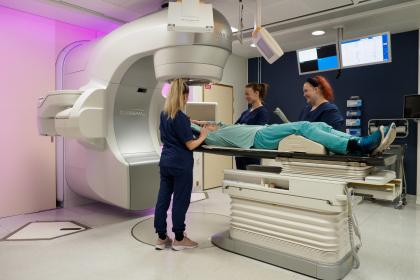Children with leukaemia
Keywords:The most common form of leukaemia of childhood is acute lymphoblastic leukaemia (ALL). Another form of leukaemia among children is acute myeloid leukaemia (AML).
In leukaemia, the normal bone marrow which produces healthy blood cells becomes abnormal. There are malignant cells which divide and increase very fast. This starts in the bone marrow but later the same is seen in the blood. At the same time, the production of normal blood cells falls rapidly, and the patient gets the common symptoms of leukaemia: anaemia, bruises, infections that heal poorly and bone pain.
The symptoms of leukaemia may be variable. Often the symptoms fit well with other diseases, and this makes the diagnosis of leukaemia difficult. For the diagnosis, a bone marrow tap is needed. When the patient is a child, these samples are always obtained under light anaesthesia from a bone of the pelvis. We have annually 6–12 new patients.
ALL and AML are treated in Finland following Nordic recommendations. The goal of leukaemia treatment is to eradicate each leukaemia cell and to provide full recovery and health to the child.
Acute leukaemia is treated with chemotherapy. If the disease is severe, a stem cell transplantation including sometimes also radiotherapy is needed.
During leukaemia treatment, many forms of supportive treatment, including blood products and anti-inflammatory drugs, are needed repeatedly. The duration of the treatment depends on the type of leukaemia, but the treatment duration is generally between 1 and 2½ years. Especially the first year of treatment requires several hospitalization periods.
Because leukaemia patients are prone to infections, hospital periods are also needed to manage them. Most children with leukaemia become well. In fact, our results are among the best of all Nordic countries.
Treatment facilities
Department of Radiotherapy
We perform radiotherapy primarily on cancer patients.
